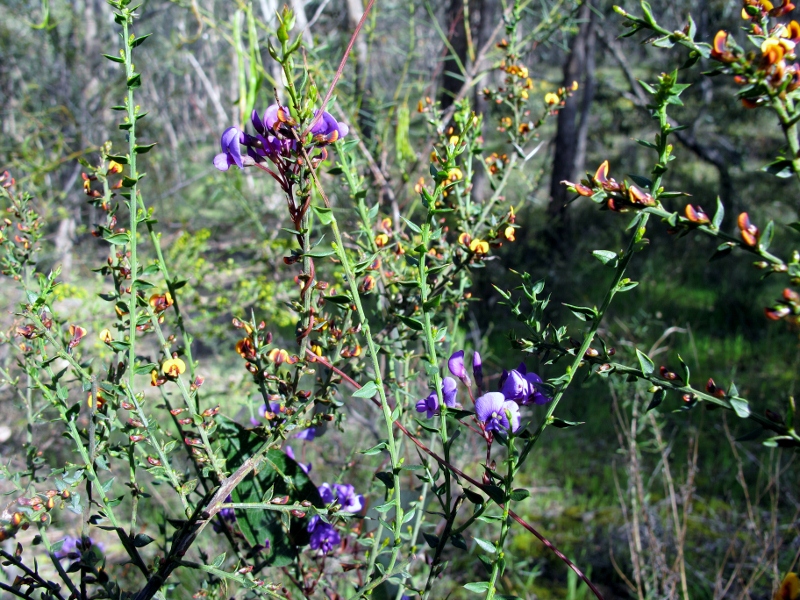FOBIF was told at the July 15 briefing in Bendigo that if a development of fifty houses or more is placed within 300 metres of public bushland, that bush will be rezoned to Zone 1, Asset Protection.
This information is relevant for a proposed 39 lot development in Happy Valley, near the eastern side of Kalimna Park. This section of the Park is currently zoned 2. An additional 39 houses could well lift the number of houses in this area to 50.

Spring wildflowers, east side of Kalimna Park: a more severe burning regime would have serious implications for this section of the park.
The township side of Kalimna Park is already classed Zone 1, Asset Protection. DEPI is faced with a serious and complicated challenge here: to manage the fuel load in an area close to houses, without destroying a precious and much used public resource.
A rezoning of the rest of the Park to Asset Protection would have severe environmental consequences: managers have more or less conceded that the frequency and severity of burning in these zones can be ecologically damaging.
This is not a simple matter. The Bushfire Royal Commission expressed the problem like this:
‘In the context of bushfires, ensuring the protection of human life means that sometimes compromises need to be made with people’s freedom to choose where they want to live, or the existence of pristine environments close to townships.’
This statement is double edged, and in need of careful consideration. On one hand, it’s clearly stating that people are not necessarily free to build in dangerous areas. On the other, it suggests that where ‘pristine’ bushland already exists close to townships, it may be necessary to modify that bushland. That is what would happen if Kalimna was effectively surrounded by housing.
For years FOBIF has been arguing that developments near or in bushland are questionable: householders either place themselves in danger, or they feel obliged to clear the bush to protect themselves. Neither is desirable.
Opinion is shifting on the matter. As a practical example, the response of the CFA to a proposed housing development in Diamond Gully, Castlemaine, is challenging. Among other observations, the document says, a bit mysteriously, ‘all stakeholders need to tackle [the safety issues] head on, rather than ducking the fundamental issue. It adds:
‘Just because a particular landholding might be capable of having a dwelling built on it or is big enough to potentially be more intensively subdivided should not make these outcomes a fait accompli.’
To FOBIF, the fundamental issues are: first, where there is bushland near settlements, careful and detailed management is necessary; and second, that new developments which may require drastic alteration of bushland for safety reasons should be severely controlled.
You can find the full CFA response here.




 Click on image for info/order page
Click on image for info/order page Click on image for info/order page
Click on image for info/order page Click on image for info/order page
Click on image for info/order page




















